Oculus Go review: this is the VR headset the world's been waiting for
The technology may not be cutting edge but with no wires, a low price and 1000+ games and apps already, Oculus Go is a winner

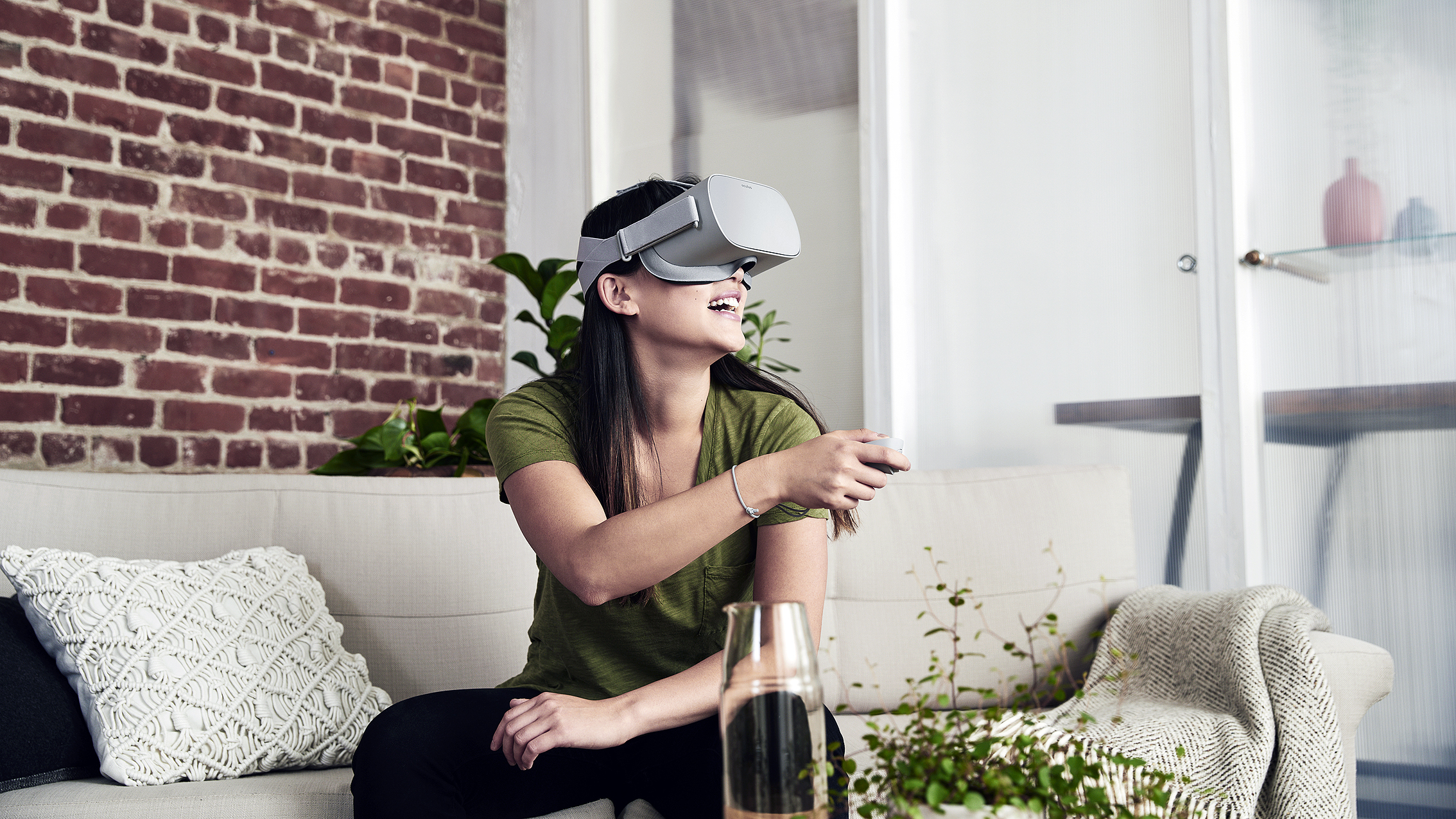
More advanced VR users can quibble all day about the Oculus Go's processing power, the omission of body tracking , the cramped FOV and the primitive controller. The fact is, this affordable, complete VR system in a box is what the world has been waiting for. If the Go isn't a smash hit, there's just no hope for virtual reality and we'll all just have to go back to actual reality…
-
+
Decent quality VR on the cheap
-
+
Everything you need in one box with no wires
-
+
Attractive and comfortable headset with excellent built-in speakers
-
+
Numerous fun games and experiences
-
-
Basic head tracking only
-
-
Tunnel vision simulation via narrow FOV
-
-
There's lots of stuff to play with but no apparent 'killer app'
-
-
Controller is decidedly basic
Why you can trust T3

Oculus Go specs
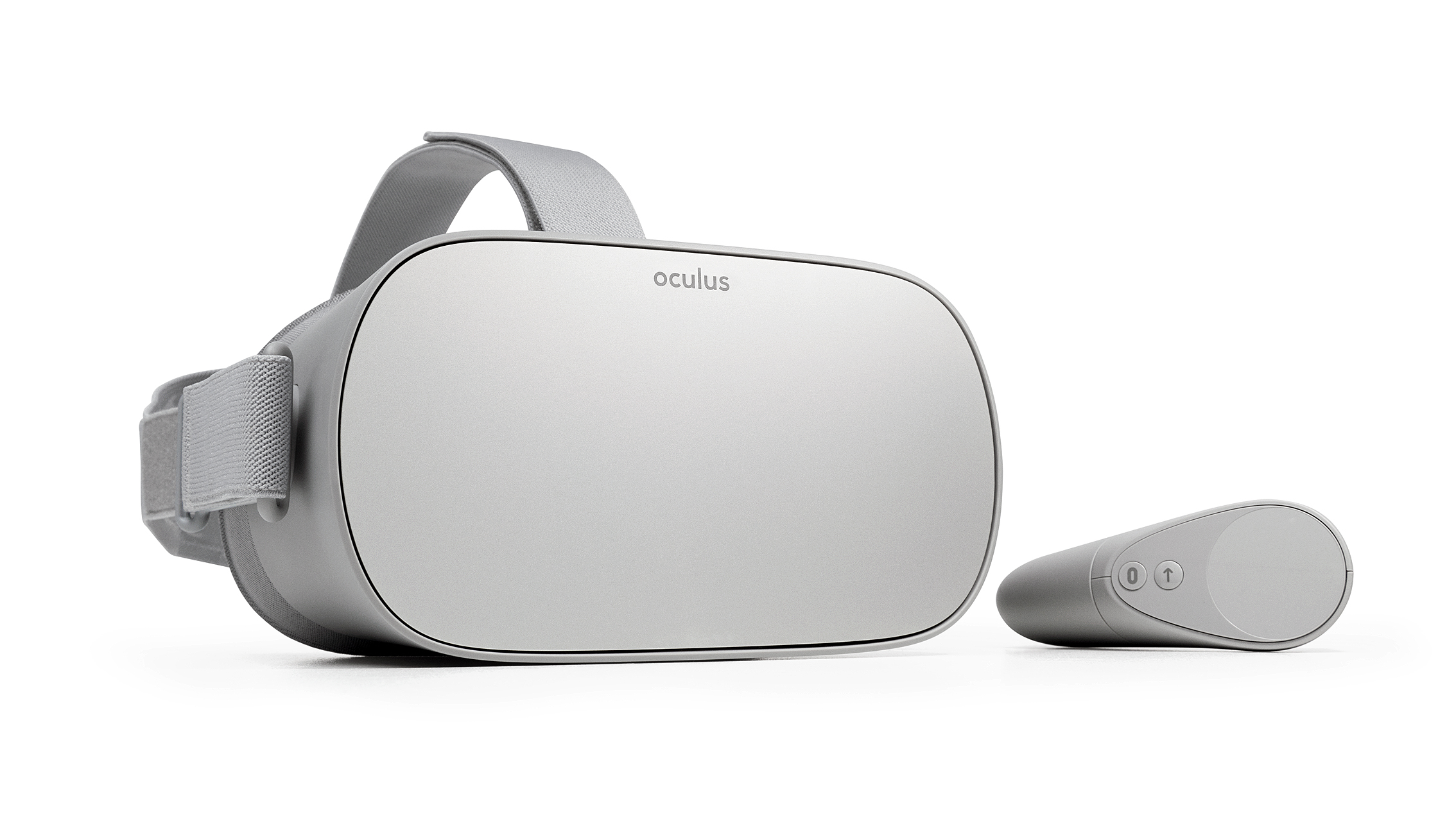
Release date: May 1, 2018
Price: £199 with controller (32GB model) or £249 (64GB)
Resolution: 1280x1440 pixels per eye
Refresh rate: 60Hz or 72Hz
Field of view: Not quoted
The Oculus Rift kickstarted the current wave of interest in virtual reality. It has so far proven to be more a gently lapping, Mediterranean kind of wave, rather than a towering, Malibu-style point break, but there is definitely a lot of interest.
What nobody's quite been able to do so far is put virtual reality in an affordable, simple format that doesn't require donning a massive pair of astronaut goggles, tethered by wires to a PC or console. Okay, there is the Gear VR, also made by Oculus, but that's only for Galaxy phone owners, and it requires you to use your phone as the screen and processor, which feels a bit weird.
Now, though, Oculus has released the Oculus Go. It's £200 (or $200, if you live in a first-world country and not Rip-Off Britain) and is entirely self-contained – screen, speakers, processing, the lot. And it's pretty comfy and comes in a very fetching 'putty' shade of grey.
- Check out the competition
- Samsung Gear VR review
- HTC Vive Pro and Oculus Rift review
- Playstation VR review
Oculus Go review: what you get in the box

EVER-Y-THING. The headset also houses the computer required to run it, the fast-switching LCD screen, which has a resolution of 2560x1440 pixels, or 1280x1440 per eye, and an excellent spatial sound system. You also get a single controller, with a thumb pad, two buttons and a trigger.
The resolution is actually higher than the full-size Oculus Rift, although I wouldn't say the graphical results are anywhere near as good.
That's down to the refresh rate being slower at 72Hz to the Rift's 90, and the fact your Rift is tethered to a massive PC with an expensive gaming graphics chip, and not whatever £200 buys you when shopping for a phone-style processor, 3MB of RAM and 32GB or 64GB of solid state storage. Oculus hasn't been very forthcoming with proper spec stuff.
Oculus Go review: design

The Go is quite an attractive thing, as VR headsets go. It's obviously been designed to sit in the homes of 'normal people', as opposed to hardcore gamers, and comes in a chic yet neutral putty tone.
Get all the latest news, reviews, deals and buying guides on gorgeous tech, home and active products from the T3 experts
It's the easiest VR headset I've come across to put on, and the most comfortable. That's not to say that it is objectively comfortable entirely, because it's not. But as large plastic masks full of electronics that you strap to your face go, it's hard to imagine anything more pleasant.
Even with glasses on, the lenses sit comfortably, and a spacer is included if you prefer them further away. Order direct from Oculus and for a further hundred quid or so, you can even have proper optical lenses fitted, to your prescription. Eyesight to the (partially) blind.
Using a material sourced from 'the intimate apparel industry' – yes, this is the bra for your face that you've always dreamed of – the Oculus Go sits comfortably over your nose and cheekbones, even when they are as razor-like as mine are, and block out light very effectively.
The controller is admittedly not amazing. The trigger is good, but the two supplementary buttons aren't very satisfying, and the touch joypad thing did not spark joy, in my pad.
Oculus Go: setup

This is so simple I don't know why I've even devoted a paragraph to it. Just look how happy this guy is with how easy it was!
You simply download the Oculus app to your iPhone or Android, set up a new account or log in to an existing one, add a credit card if you intend to buy apps or games and pair with your new headset, which will then pair with the included controller.
And that is all. As someone who was among the first to endure setting up HTC Vive, this greatly simplified version was among the most pleasant setup processes of my life.
Yes, yes, Vive pays off with a far more sophisticated overall experience, but at least Oculus Go didn't require me to stick small cameras to my wall with duct tape, then spend 97 hours trying to get its Windows app to run.
Oculus Go review: what is it like to use?
The thing about Oculus Go is it is resolutely not aimed at anyone who's already well into VR. Some of the most fun things I've done in recent years (involving tech at least) have been on full-fat Oculus Rift and HTC Vive setups. There is nothing here to match to that crazed level of adrenaline-pumping, two-controller, full-body-tracked, immersive glee.
So with the major caveat that this is a cinch to set up and costs just £200 – what can you buy for 200 quid these days? A Toblerone and a few pints of milk – I'll say that no VR power user is going to be terribly impressed by Oculus Go. However, those looking to dip a toe for the first time should be knocked out.
The graphics are okay but the field of view (not quoted, so don't ask me exactly what it is meant to be) feels decidedly tight. Developers might want to have your in-game character wearing a helmet, or snood, in Oculus Go games, in order to 'explain' this. It's not like having toilet roll tubes taped to your eyes, as such, but you sure as hell don't get much peripheral vision, even by VR standards.
If you are looking for hugely versatile, dual controllers (one for each hand), you won't get it here. You would like to be able to physically move around in a 3D VR space? Well tough luck: you can't. You can stand or sit, and the Go will track your head movements.
This caused me a certain amount of confusion playing space flight games such as Anshar Online. With these you steer with your head, as in your ship moves in the direction you are looking. I actually thought there was a bug in the game because I could only steer in a very limited way… until I realised I needed to be stood up, or sat on a revolving chair in order to execute a 180. Most games have you moving 'on rails', which is probably just as well for dummies like me.
The graphics are about on par with a Galaxy S8 in a Gear VR, which is to say, just good enough to create an enjoyable gaming experience. If you were watching these games on a monitor you would think it was time to upgrade your graphics card, but the added element of 360-degree immersion smooths that over.
The audio system is excellent. Speakers in the headset do a very good job of delivering music, speech and sound FX, giving you a decent amount of spatial awareness where appropriate. It's also impressively loud in your head without being excessively noisy for others nearby, although if you want to be completely confident of not annoying other people in your front room or on the bus to work, you can plug in headphones instead.

As noted, the visuals may be primitive compared to a full-on PC gaming rig or current-gen console, but you still get that extra intensity that the best VR games all rely on. If you suffer from motion sickness in actual reality, you may well get it in virtual reality, but even if you don't, the vertiginous drops of something like Coaster Combat will get your adrenaline pumping. Played in non-VR, Coaster Combat would seem reasonably dire; VR is literally transformative.
The Oculus app store has a lot of quantity with over 1,000 titles, and a fair amount of quality but there is not one app or game I would point to as the must-have, killer title. That's hardly surprising; several years on from the launch of Oculus Rift, that is not exactly awash with AAA titles and even Sony hasn't been able to convince most of gaming's publishing royalty to provide support.
Oculus Go review: it's a social thang
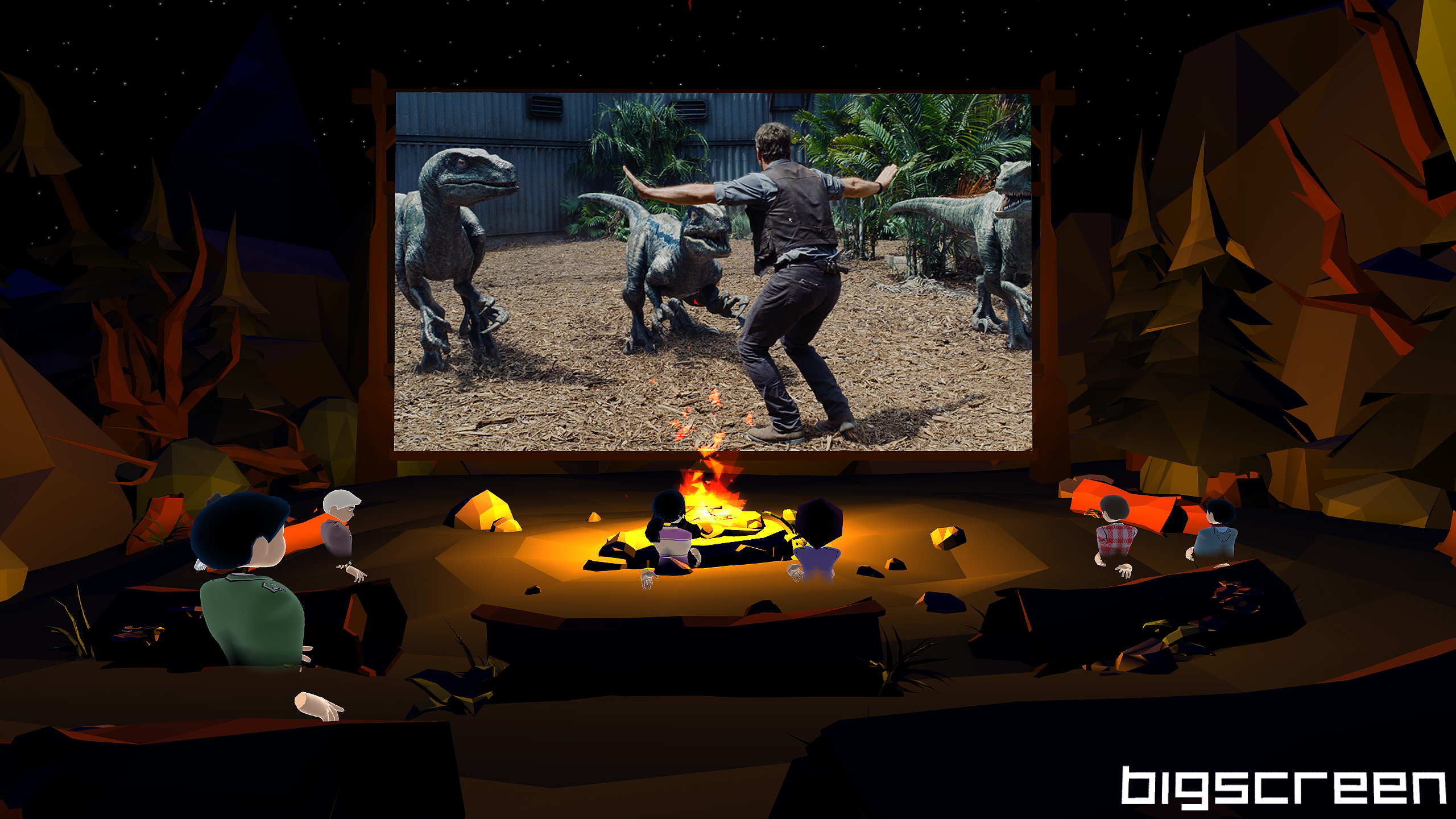
Funnily enough, that leaves Netflix as probably the most recognisable title in the store. If you’re one of the many users of Plex you can also access all your Plexified media in VR form. Because of the way VR headsets work you can also watch stored or streamed 3D films and pretend it’s 2012 all over again.
As Oculus is owned by Facebook, it's naturally having to at least pretend that there is a social purpose to its existence, and so Oculus Go makes great play of its communal experiences.
These range from an updated Oculus Rooms, which lets you doll yourself up as an avatar and invite fellow Oculus users around to your groovy virtual pad, where you can hang out, play board games including Boggle, and watch movies.
Curiously, once I'd designed the below avatar, nobody wanted to come visit me, however.
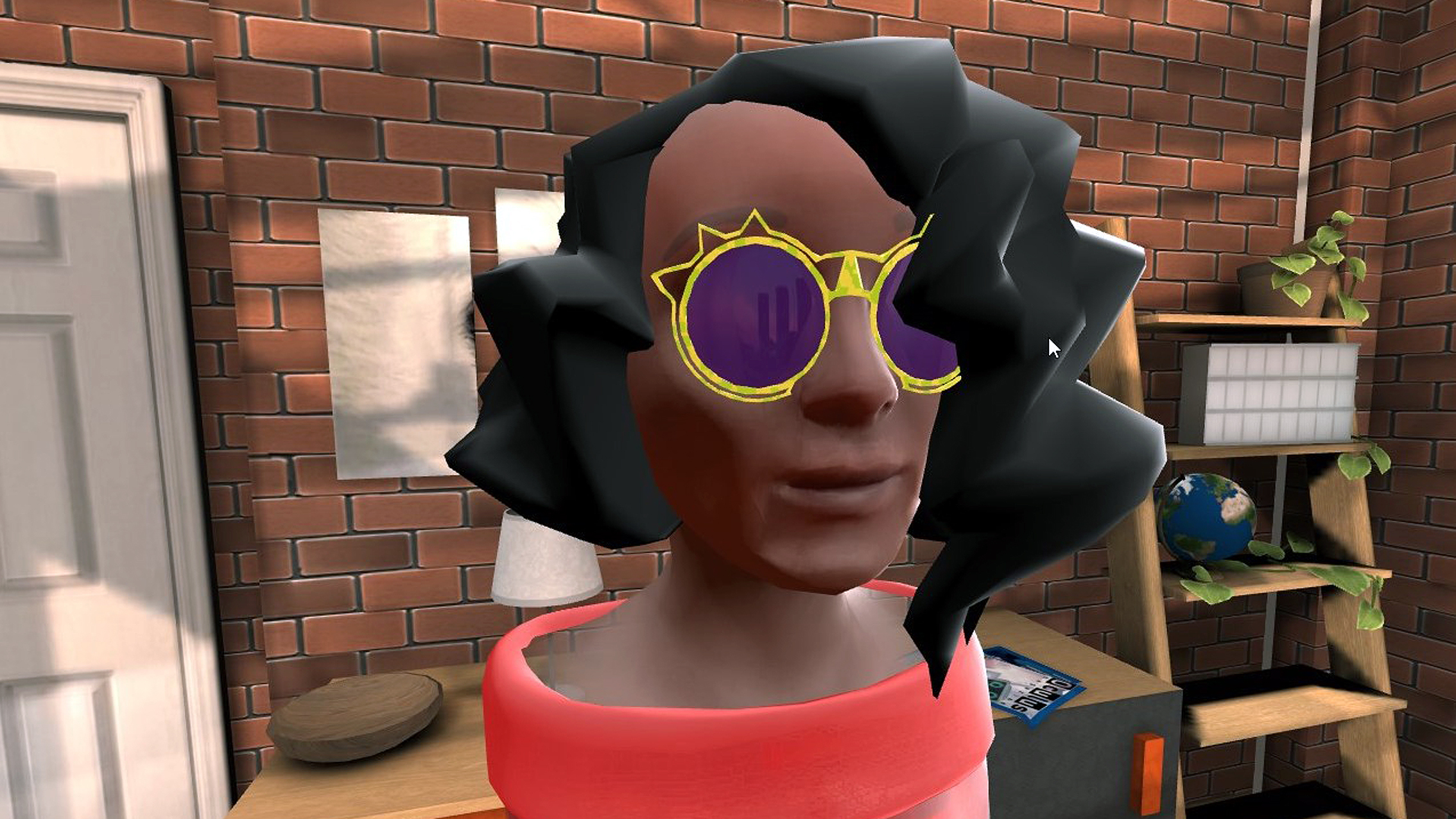
Oculus Rooms and Oculus TV (the over-arching space in which content providers can peddle their wares) are a lot of fun.
However, with the best will in the world, watching a movie on a VR headset is emphatically not like seeing it on a big screen. It is like watching a live video feed of a movie, very, very close to your eyeballs, on a sub-HD screen with a relatively slow refresh rate. It's potentially handy on a long plane or train journey but personally, I am not going to call up a friend on the other side of the world and watch The Martian like that with them.
Much more useful – and weirder – is Oculus Gallery. This lets you view your photos and videos on a similarly 'huge' screen. As your home movies and photos tend to lack the production values of a Hollywood film, this is much less jarring. It also, finally, is THE perfect way to view all those previously neglected panoramas and 360 videos you've shot.
Oculus Gallery displays photos so they are not only seemingly enormous, but also in such a way that you feel very near them. In fact, it is rather like you are literally in the picture. At the demo where I got my Go to review I watched a video of some Oculus employees filming their adorable toddler taking its first steps. Which was nice, but the video 'screen' was so huge I found myself mainly looking around the rest of the understatedly chic apartment in which the video had been shot, thinking, "Ooh, I like those cushions."
A 360 video camera's-eye-view of cats being fed in a Japanese 'cat cafe', by contrast, was absolutely freaky and bordering on scary. I liked it.
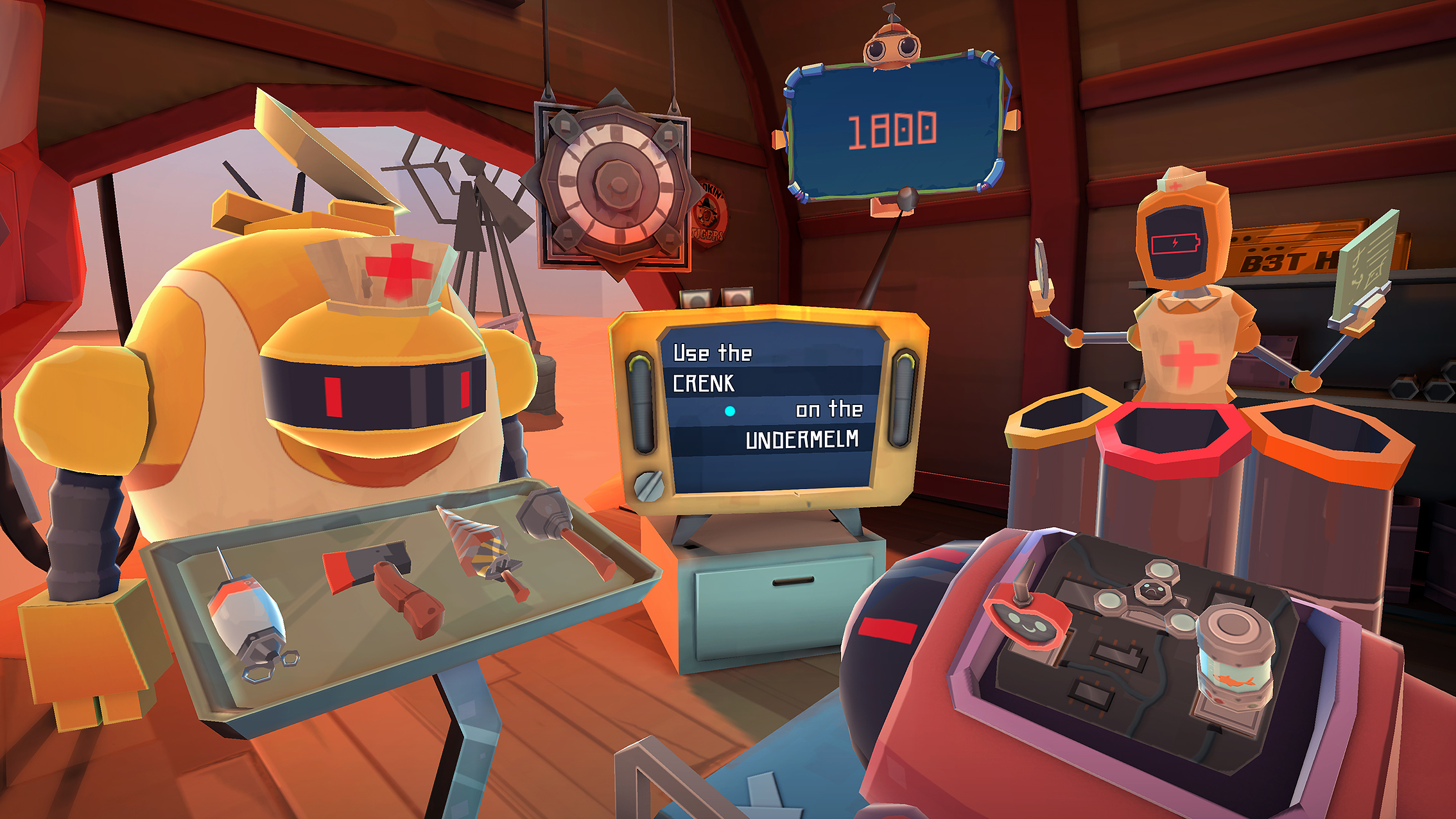
Anyway, overall I'd say the VR experience offered by the Oculus Go is some way short of the cutting edge, but for £199 that seems a ridiculous criticism.
Oculus Go review: verdict
I almost have two verdicts to give here. Those seeking the most intense gaming thrills and a peak into a near-future world where it's hard to discern the difference between reality and computer-generated fantasy will not find it in Oculus Go unless they're amazingly easily impressed.
However, as a sellable consumer device it's fantastic, and exactly what the second wave of VR has been crying out for since day one. For what you pay for it, it's hard to get too annoyed about its limitations.
Will Oculus Go revolutionise social interaction and the world of entertainment as we know it? No. But it will be one of the biggest selling toys this Christmas and it will open a lot more minds to the possibilities of VR. It's not a doorway to the future, but it is a very stylish hallway that eventually leads to a doorway to the future.

Duncan is the former lifestyle editor of T3 and has been writing about tech for almost 15 years. He has covered everything from smartphones to headphones, TV to AC and air fryers to the movies of James Bond and obscure anime. His current brief is everything to do with the home and kitchen, which is good because he is an excellent cook, if he says so himself. He also covers cycling and ebikes – like over-using italics, this is another passion of his. In his long and varied lifestyle-tech career he is one of the few people to have been a fitness editor despite being unfit and a cars editor for not one but two websites, despite being unable to drive. He also has about 400 vacuum cleaners, and is possibly the UK's leading expert on cordless vacuum cleaners, despite being decidedly messy. A cricket fan for over 30 years, he also recently become T3's cricket editor, writing about how to stream obscure T20 tournaments, and turning out some typically no-nonsense opinions on the world's top teams and players.
Before T3, Duncan was a music and film reviewer, worked for a magazine about gambling that employed a surprisingly large number of convicted criminals, and then a magazine called Bizarre that was essentially like a cross between Reddit and DeviantArt, before the invention of the internet. There was also a lengthy period where he essentially wrote all of T3 magazine every month for about 3 years.
A broadcaster, raconteur and public speaker, Duncan used to be on telly loads, but an unfortunate incident put a stop to that, so he now largely contents himself with telling people, "I used to be on the TV, you know."